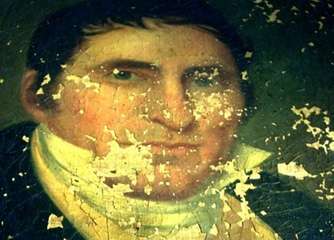Ensuring cultural heritage protection

Transit exhibitions and artwork loaning may lead to mistreatments or damages of art pieces, exposure to sudden environmental changes and to the risk of fraud.
A technology relying on holography, that involves measuring mechanical deformations, as signature of artworks has previously been developed to address the protection of cultural heritage. This technology has now found applications in art conservation. It was adopted for the follow-on cultural heritage EU-funded project SYDDARTA. The project aims to develop aprototype instrument for monitoring the deterioration of works of art and other heritage artefacts. It relies on an optical technique by which hyper-spectral images are acquired while simultaneously scanning the 3D profile of the object.
The original technology stems from MULTIENCODE, a research project funded by EU, involving the National Gallery of Athens and the TATE Gallery, London, UK. Completed in 2008, it led to the development of a hybrid portable device dubbed Impact Detection System-(IDS). This device works by relying on coherent laser metrology principle. It can trace impacts such as aging, effect of exposure to the environment, restoration interventions, and transportation. It can therefore identify an original artwork by retrieving and recording their unique characteristic features.
"Once the hybrid system and recording technique has been developed, a campaign of measurement with a large series of icons and canvases, before and after accelerated ageing procedures, was carried out to establish a standardised protocol for insuring consistent and comparative results between different users," explains Vivi Tornari, a researcher specialised in holography and laser applications in artwork diagnostics at the Foundation for Research and Technology Hellas – Institute of Electronic Structure and Laser, in Heraklion, Greece (FORTH-IESL). She is also the project coordinator.
However, the technology is not available in the public domain yet. "The standardised protocol termed Impact Assessment Procedure and the optical geometry of the system have not been published in order to keep the opportunity for patents and safeguard intellectual property rights" Tornari tells youris.com. "We are now interested in upgrading the prototype to commercialise it or to provide improved services to the artwork sector," she adds.
Experts believe that the technology is suitable to be used in museums. And can be a valuable tool for a conservation, since "it can provide information on past and future damages and even enlighten us on how successful a previous conservation operation was," says Eleni Kouloumpi, a researcher at the laboratory of physicochemical research at the National Gallery - Alex Soutzos Museum in Athens, Greece. However, "it has to be operated by conservation scientists who have a high expertise of materials and their behaviour in order to be able to correctly interpret the information received," Kouloumpi tells youris.com.
Other experts concur but with a caveat. "This technology might be useful for large art objects, helping conservators look for damage which they otherwise would have to spend a long time looking for by eye," comments Bill Wei, a senior conservation scientist at the Netherlands Institute for Cultural Heritage, in Amsterdam. But he believes that the technology may not be as good for crack growth and paint loss on the order of a few millimetres or less, or even sub-surface cracking in sensitive objects, which already show a lot of surface cracking.
What is more, Weil believes there are many other established methods for non-destructive testing of objects and components which have higher resolution and are less complicated to use than the interferometric techniques used in the project. He concludes "I think the lack of resolution, and the existence of many other established and competing techniques will make it hard to commercialise [this technology]," Wei tells youris.com.
For now, however, the technology has also found application further afield, in the aeronautics sector through another EU funded project called FANTOM. It consists in developing a holographic technique for measuring mechanical deformations that can be envisaged as signature of artworks. "In FANTOM, we use a different laser [in the infrared spectrum] than in MULTIENCODE [in the visible spectrum]. "FANTOM's infrared holography allows larger deformation to be measured", explains Marc Georges, head of the laser and no- destructive testing lab, at the Spatial centre of Liège, Belgium. This finds application in aerospace for testing large aircraft parts and in detecting defects.
More information:
www.syddarta.eu/
www.iesl.forth.gr/projects/multiencode/
www.fantom-ndt.eu/
Provided by Youris.com




















